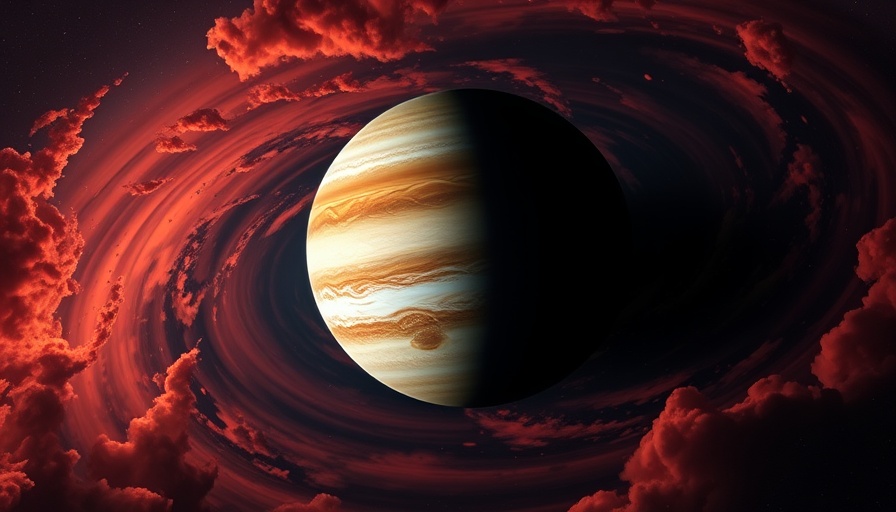
Unveiling the Wonders of Jupiter's Cyclones
The latest findings from NASA's Juno mission have revealed astonishing phenomena occurring on Jupiter, including a massive cyclone system behaving in ways that challenge our understanding of atmospheric dynamics. The north pole of Jupiter features a central cyclone sprawling 1,864 miles (3,000 kilometers) wide, surrounded by eight smaller cyclones that demonstrate captivating interactions that resemble mechanical springs. Unlike Earth's storms that dissipate towards the poles, Jupiter's cyclones engage in continuous movement, constantly bouncing off one another as they drift westward. This behavior, described by Juno co-investigator Yohai Kaspi as a system stabilized by competing forces, deepens our understanding of how such massive systems operate under differing physical laws compared to Earth.
A Glimpse at Io: A Volcanic Wonder
While Juno studies the violent weather of Jupiter, it also orbits the most volcanic moon in our solar system, Io. Following several flybys, scientists have gathered data on the most powerful volcanic eruption recorded on Io, marking a significant highlight in planetary science. Recorded eruptions emitted molten lava and demonstrated an active geology that may shed light on the moon's internal processes. As Juno prepares for its next close encounter with Io, there's keen anticipation about obtaining deeper insights into what lies beneath its surface, where molten magma flows could hold keys to understanding volcanic activity in our solar system.
Connecting the Dots: The Bigger Picture of Space Exploration
The discoveries made by Juno prompt essential questions about all bodies in our solar system. The intricate dynamics of Jupiter's atmosphere and the volcanic activity on Io serve as vital clues in deciphering the processes that govern other celestial entities. Understanding the behavior of such immense storms, alongside active volcanic phenomena, encourages us to explore how these elements might relate to planetary formation and the conditions necessary for sustaining life.
Future Implications: What Lies Ahead?
As Juno continues to collect data from Jupiter and its moons, the implications extend beyond our immediate curiosity about these celestial systems. The knowledge gathered from understanding atmospheric dynamics and volcanic activity may influence future space missions, exploration strategies, and even our theories on planetary evolution. Additionally, these investigations may impact technological innovations back on Earth by providing new insights into fluid dynamics and material sciences.
Taking Action: Engaging in the Future of Space Exploration
For space enthusiasts and budding scientists, these revelations underscore the importance of supporting scientific missions like Juno. As we stand on the precipice of further discoveries, the call to action is clear: engage with advancements in space technology, advocate for science funding, and spark conversations that inspire the next generation of space explorers.
 Add Row
Add Row  Add
Add 




Write A Comment